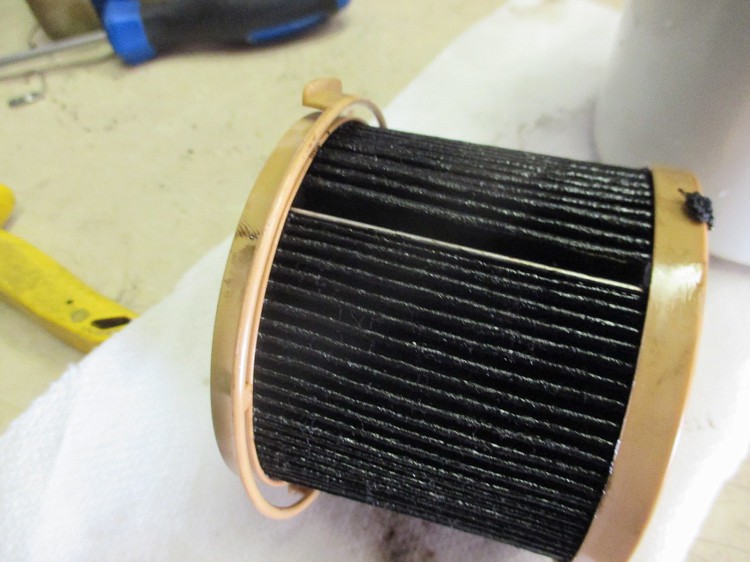The Racor with the impossible gasket ring
I recently changed two 1000FG filters on my Canoe Cove, and the second one nearly got to me. This was because the black rubber ring gasket that separates the glass bowl from the filter casing was proving impossible to replace.
To reinstall, you have to manually place the gasket up in its channel, then, while the centrifugal basket dances half-loose in between - in one motion, push it into place with the bowl itself, and put the four screws back in. Worked fine in the first one. Seemed to this time, and I started the engines to verify it all, and they purred and needed no priming.
One problem: my aft bilge pump came on later, I didn't expect it to, luckily looked and yes - it was diesel! I took a flashlight down to the ER and noticed aggressive big drips coming out of the back of the filter in rapid sequence. My oil spill cloth under it was soaked and overflowing into a bilge drain. YEEOW!
I shut down the bilge pump and knew exactly where to look: the rubber ring wasn't seated and while it didn't drip to sit there and look at it, when the fuel pressure built up it was a fountain.
The real pain was trying to fix it, which for a long time seemed impossible. I tried ten times to delicately place the (O ring with square sides) correctly, but the bowl face is flat and has no ridge - as a product designer myself I was not impressed. It could run around anywhere, and did. Soaked in diesel from repeated attempts to hang the ring on a sky hook that didn't exist - I chanced on a solution.
I dried the ring and slot it needed, then coated the upper and outside edges of the ring in silicone, and then easily placed it where it should be. Checked it all around to make sure it was right, even looked at it with a hand mirror. Then put the bowl and screws back in nice and flush, and knew I had it.
The MORAL: when changing the bigger Racors, either leave the old bowl ring in place or add silicone. Or plan to fill your ship's pail with dieseled bilge water for a few hours, after waiting for darkness...


